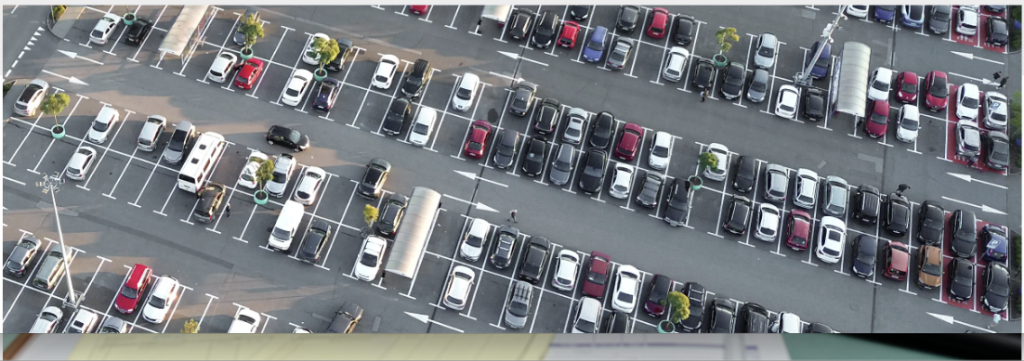Rateseeker Round-Up: July Business News
As we approach the start of a new financial year, Australian businesses are bracing for what could be a period of cautious optimism. The local economy is showing mixed signals — household spending remains subdued, yet inflation is easing, the labour market remains resilient, and the Reserve Bank has opened the door to further rate cuts.
In this month’s round-up, we explore what’s shaping the business landscape heading into FY26, including how to thrive in a soft economy, the ATO’s change to tax-deductible interest, parking market insights that reflect office recovery trends, and the latest updates from the RBA.
How to Thrive in a Weak Economy

Australian consumers continue to tighten their belts, creating challenging conditions for businesses across retail, services, and hospitality.
According to the latest figures from the Australian Bureau of Statistics (ABS), household spending in April rose just 0.1% from the previous month, a minimal increase that barely offsets inflation. Retail spending, in contrast, fell 0.1%, marking the third time in six months that sales have slipped.
The cautious consumer sentiment is clearly visible in savings behaviour. The household saving ratio has risen for three consecutive quarters, from 2.4% in June 2024 to 5.2% in March 2025, indicating that Australians are opting to hold onto cash rather than spend it.
While this belt-tightening helps cool inflation, it also squeezes business revenue. The challenge for many owners is to maintain profitability without losing customers who are becoming increasingly price-conscious.
Five Strategies to Boost Sales in FY26
- Strengthen Your Online Presence
An updated, mobile-friendly website that’s easy to navigate can make a world of difference. Ensure your products, pricing, and services are clearly displayed, and consider adding live chat or instant quote tools to boost conversions. - Invest in Customer Retention
It’s far more cost-effective to retain existing customers than to win new ones. Loyalty programs, exclusive discounts, or personalised communications can encourage repeat business and foster long-term relationships. - Review Your Pricing Strategy
In a weak economy, even small adjustments can have a big impact. Bundle products, test different price points, or introduce tiered offerings to cater to varying budgets. - Diversify Your Marketing Channels
Don’t rely solely on one medium. Use a combination of email marketing, social media, and community partnerships to reach a wider audience and improve engagement. - Offer Flexible Payment Options
With consumers looking for ways to manage cash flow, flexible options like buy-now-pay-later (BNPL) or extended payment terms can make purchasing decisions easier.
In a slower economy, adaptability becomes a competitive advantage. Businesses that stay agile, understand their customers’ shifting needs, and continue to deliver value are more likely to thrive in FY26.
ATO Interest No Longer Tax-Deductible from July

One of the most significant changes for business owners this financial year involves the Australian Taxation Office’s (ATO) interest charges.
From 1 July 2025, interest incurred on overdue tax debts, known as the General Interest Charge (GIC), will no longer be tax deductible.
Previously, some businesses treated this charge, currently 11.17% and compounding daily, as a manageable cost of doing business. But that’s about to change. Going forward, any ATO interest paid will increase your expenses without providing any tax benefit.
This update is designed to encourage timely tax compliance and reduce reliance on the ATO as a short-term financing solution.
What Business Owners Should Do Now
- Pay ATO Debts Promptly: If possible, settle outstanding obligations before 1 July to avoid incurring non-deductible interest.
- Explore Lower-Interest Alternatives: Speak with your accountant or financial adviser about using a business loan or line of credit instead. These may offer lower rates and remain tax-deductible.
- Implement Cash Flow Planning: Allocate funds monthly for GST, PAYG, and superannuation obligations to avoid surprises at tax time.
Being proactive now can save your business money in FY26 and prevent unnecessary strain on your finances later in the year.
Office Vacancies and Parking Rates: What the Data Reveals

Australia’s parking market is offering fresh insight into the recovery trajectory of our commercial office sector, and it’s painting a mixed picture.
According to data from Ray White Group, Brisbane has officially overtaken Sydney as the most expensive capital city for casual parking. Daily rates now average $80.84, reflecting stronger office attendance and consistent tenant demand.
“Brisbane’s office vacancy rate is just 10.2%, and we’ve seen positive take-up of space,” explained Vanessa Rader, Ray White’s Head of Research. “That demand is supporting premium pricing.”
By contrast, Melbourne’s parking prices have declined, now sitting at $64.43 per day, a level not seen since 2013. Rader attributes this drop to high office vacancies and sluggish weekday attendance.
“Melbourne has the highest vacancy rate of any capital at 18.0%. Parking operators have had to offer significant discounts — in some cases, up to 62.9% off early-bird rates — just to maintain occupancy and cash flow.”
Across Australia, commercial car park operators are adjusting their pricing strategies in response to these localised market conditions. Stronger-performing CBDs such as Brisbane and Sydney are sustaining higher rates, while weaker ones like Melbourne and Adelaide are competing through heavy discounts and added incentives.
This dynamic highlights broader trends within the commercial property sector, areas with higher workforce attendance and steady leasing demand are seeing stabilised or even rising valuations, while others continue to feel the effects of hybrid work patterns and slower office take-up.
For investors, these variations could signal opportunities in undervalued markets or premium assets in growth-focused cities. Those interested in exploring commercial parking investments may find value in acting before rates and demand recalibrate further in 2025–26.
RBA Opens the Door to Further Rate Cuts
The Reserve Bank of Australia (RBA) has confirmed that while the local economy remains soft, inflation is easing in line with expectations and the central bank is open to additional rate cuts if global headwinds intensify.
In the minutes from its May 19–20 meeting, the RBA acknowledged that GDP growth had improved in late 2024, but recent data showed weaker-than-expected household consumption heading into 2025.
“Earlier declines in real household disposable income remain a constraint on consumption,” the RBA noted. However, it also observed that rising household wealth — buoyed by stabilising property prices and equity gains — had provided some support to spending.
The RBA’s tone was cautiously optimistic. Business sentiment and hiring intentions have stayed broadly steady, and the unemployment rate has held firm at around 4.1% since mid-2024. However, wage growth has softened, and voluntary job turnover — a strong indicator of worker confidence — has fallen.
On inflation, the central bank welcomed confirmation that the trimmed mean measure had returned to its target range of 2–3%. “This path had been expected, but it provided welcome confirmation that potential upside inflationary risks had not crystallised,” the RBA said.
At the meeting, the Board opted to cut the cash rate by 25 basis points, bringing it to 3.85%, and signalled it was prepared to cut again if downside risks, particularly from global developments, were to materialise.
This decision aligns with the RBA’s strategy to provide modest stimulus while maintaining long-term inflation stability. For businesses, this could mean lower borrowing costs, improved financing conditions, and renewed consumer confidence in the months ahead.
Looking Ahead to FY26
As Australia heads into the 2025–26 financial year, the business environment will likely remain a delicate balance between opportunity and caution.
On one hand, slower consumer spending, tighter budgets, and soft wage growth could dampen sales and confidence. On the other, lower interest rates, stabilising inflation, and gradual improvements in business sentiment suggest a foundation for moderate recovery.
Success in this environment will depend on adaptability. Businesses that plan proactively, optimise cash flow, and stay in tune with changing market conditions will be best positioned to thrive. At RateSeeker, we understand the importance of preparation and informed decision-making — especially in a shifting economic landscape. Whether you’re looking to refinance, expand, or invest in new commercial assets, our team can help you secure the right finance solutions to support your goals in FY26 and beyond.
** General Advice Warning
The information provided on this website is general in nature only and it does not take into account your personal needs or circumstances into consideration. Before acting on any advice, you should consider whether the information is appropriate to your needs and where appropriate, seek professional advice in relation to legal, financial, taxation, mortgage or other advice.




